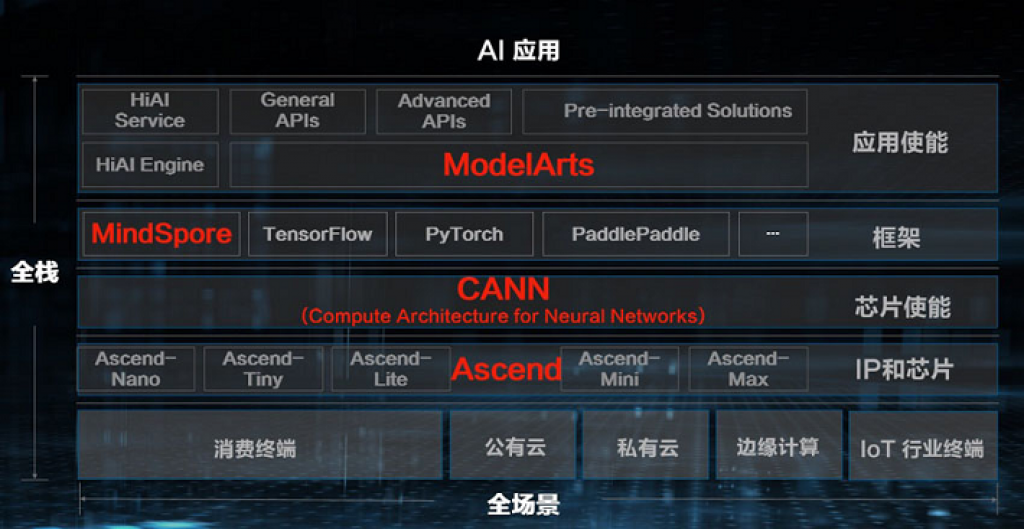This market research report was originally published at Tractica's website. It is reprinted here with the permission of Tractica.
At the Huawei Connect 2018 conference, apart from announcing a broad full-stack AI strategy, Huawei also talked about upcoming support for on-device training capabilities for its Ascend Lite chipset that is targeted at smartphones supporting 1 to 2 watts (W) of power and AI models of 10 megabytes (MB) and above. In fact, as part of its Ascend chipset portfolio that spans the device, network edge, and cloud, all chipsets above 1 W will support training on the device, which includes Ascend Lite, Mini, and Max.
Although details were not provided, on-device training is part of Huawei’s MindSpore architecture that supports an on-device learning framework. MindSpore is Huawei’s equivalent of TensorFlow, PyTorch, or PaddlePaddle AI frameworks that is tuned and optimized for Huawei’s AI stack that includes application enablement, chip enablement, and chipsets.

(Source: Huawei)
MindSpore is a unified training and inference framework that works across the device, edge, and cloud. It is flexible in adapting to different resource budgets and can support edge-cloud collaborative training, as well as machine learning, deep learning, and reinforcement learning.
Huawei did not provide any examples or use cases to support on-device training, but mentioned that it will be launched during 1H 2019. The framework will sit on the device and will take up less than 2 MB of footprint.
Potential On-Device Training Use Cases and Applications
Use cases that are likely to drive on-device training include those that are impacted by privacy, bandwidth cost, and latency issues. Speech recognition, image tagging, face unlocking, and predictive text are all examples of use cases that can employ on-device training today, where a combination of privacy and latency concerns determines edge versus cloud processing.
Future on-device training applications could include personal robots building detailed indoor maps of your house and objects for navigation and other purposes like finding your keys. For mobile on-device training, my personal favorite is an AI avatar of myself that can answer phone calls on my behalf in my own voice via an advanced version of Google Duplex that is trained on my voice. We have yet to scratch the surface on AI edge applications, and the possibilities are endless. AI training at the edge will only accelerate these possibilities and use cases.
Huawei’s collaborative cloud-edge training solution sounds like Google’s Federated Learning framework. However, it is likely that Huawei is trying to push for improved capabilities for training on the device, with application developers having much more flexibility in defining how they want to run their workloads and how they want to split the training across the cloud, network edge, and device.
The Forecast for AI Application-Specific Integrated Circuit Architectures
Tractica’s Artificial Intelligence for Edge Devices report forecasts that AI edge chipsets, particularly application-specific integrated circuits (ASICs), will support both training and inference on the same chipset around the 2021 time frame. While Huawei’s on-device learning framework looks like a software capability, rather than a chipset capability, we will have to wait and see if Huawei might be accelerating the push toward a pure hardware-based on-device AI, which is driven by tera operations per second (TOPS), rather than software optimization.

Nevertheless, Huawei is already accelerating the push for ASIC architectures dedicated for AI workloads with the announcement of its Ascend chipset portfolio. This is another trend that Tractica covers in the Artificial Intelligence for Edge Devices report, as dedicated AI ASICs seem like a better fit than system-on-a-chip (SoC) accelerator cores like Apple’s Neural Engine or Google Pixel’s Image Processing Unit (IPU), which are likely to run into performance bottlenecks in the future, as AI workloads and applications become more complex, diverse, and mature.
Huawei has already eclipsed Apple in terms of smartphone market share, which means that its Ascend AI portfolio, which will soon be integrated into Huawei’s smartphones, will become an industry leading AI architecture, and possibly a benchmark for Apple and Samsung to follow as they plan their own AI chipset strategies.
Aditya Kaul
Research Director, Tractica


